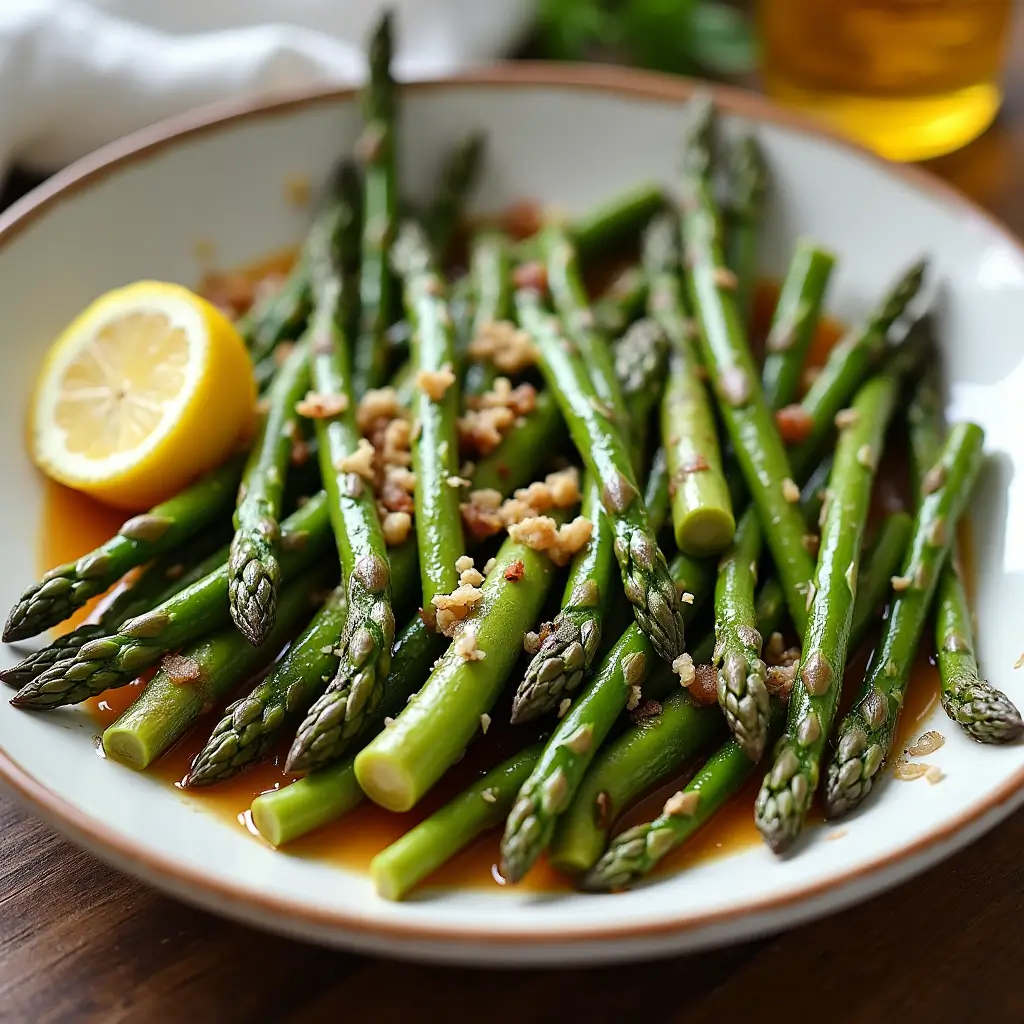Ever wondered why Germans eagerly await spring each year? The answer lies in a vegetable so revered it’s nicknamed “white gold” – Spargel, or German White Asparagus. Today, I’m sharing my perfected technique for preparing this seasonal delicacy, drawing from years of experience in German kitchens and countless conversations with local farmers.
Beyond the Green: Understanding German White Asparagus
Unlike its sun-kissed green cousin that you might find in our Moroccan Chicken Couscous, white asparagus tells a different story. Growing beneath mounded soil, these pristine stalks develop their characteristic ivory color and delicate flavor that’s captured German hearts for generations.
The Essential Kitchen Setup
Before we dive into cooking, let’s talk about equipment that makes a difference:
- A tall asparagus pot (though any large pot will work)
- Y-shaped peeler (crucial for proper preparation)
- Kitchen twine for bundling
- Light-colored serving platter (shows off the asparagus’s elegant appearance)
Ingredients That Make the Difference
For 4 generous servings:
- 1 pound white asparagus stalks (look for closed tips and moist ends)
- 2 tablespoons European-style cultured butter
- 1 unwaxed lemon
- 1 teaspoon raw cane sugar
- Fine sea salt
- Fresh flat-leaf parsley
The Three Pillars of Perfect Spargel
1. The Art of Peeling (5 minutes)
Unlike traditional recipes that simply suggest peeling, here’s my tested technique:
- Hold each spear gently near the tip
- Start peeling 1.5 inches below the tip
- Rotate as you peel downward, removing strips in one fluid motion
- Trim the woody ends at a slight angle
2. The Cooking Revolution (10 minutes)
I’ve discovered that traditional timing often overcooks Spargel. Here’s my method:
- Create a flavor-enhanced cooking liquid:
- Cold water
- A pinch of salt
- Small amount of sugar (balances natural bitterness)
- Two thin lemon slices
- The Temperature Dance:
- Bring water to gentle simmer (not rolling boil)
- Add asparagus in a single layer
- Cook until a fork meets slight resistance (usually 7-9 minutes)
3. The Finishing Touch (2 minutes)
Here’s where we diverge from tradition:
- Remove asparagus with tongs (don’t dump in colander)
- Arrange on warmed platter
- Drizzle with melted butter while still hot
- Finish with fresh lemon zest (not just juice)
- Scatter with micro-planed parsley
Chef’s Insights: Common Pitfalls and Solutions
- Texture Issues:
- Stringy spears? You’ve missed some outer layer
- Too soft? Reduce cooking time by 2 minutes
- Too tough? Peel a bit deeper
- Flavor Enhancement:
- Bitter notes? Add a touch more sugar to cooking water
- Lacking depth? Try cultured butter for finishing
- Too plain? Consider adding fresh herbs to cooking water
Modern Serving Suggestions
While traditionalists serve Spargel with boiled potatoes, let’s explore contemporary pairings:
- Alongside our Matjesbrötchen for a complete German experience
- With quinoa tossed in brown butter
- Accompanied by citrus-dressed microgreens
Nutritional Benefits
Each serving provides:
- Essential fiber: 3g
- Vitamin K: 42% DV
- Folate: 34% DV
- Potassium: 286mg
- Calories: 120
Join Our Cooking Community
Created something special with this recipe? Share your Spargel success story! For more German-inspired dishes, explore our main dishes section.

10-Minute German Asparagus Recipe
Ingredients
Equipment
Method
- Peel white asparagus and trim the ends. For green asparagus, snap off the tough ends.
- Bring water to a boil, adding sugar, salt, and lemon juice. Boil asparagus for 5-7 minutes.
- Drain and place on a serving platter. Drizzle melted butter and squeeze lemon juice over.
- Garnish with parsley and serve immediately.
